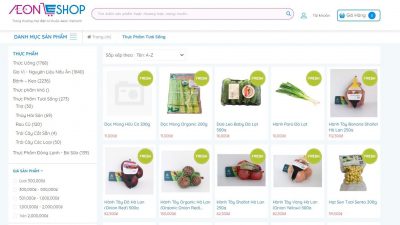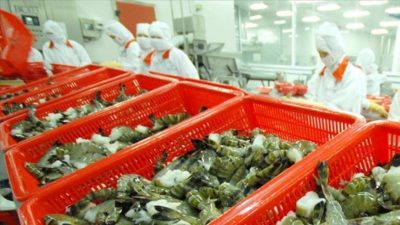|
NDO – The application of technology, the promotion of production linkages, and the establishment of farming area codes for exports have helped improve the quality and value of Vietnamese fruits as they gradually penetratedemanding markets across the world. Fruit trees are becoming key crops in many localities in Vietnam, generating about hundreds of millions of Vietnamese dong in income per ha per year. |
|
Approaching fastidious markets The fruits are not only being exported to the Chinese market, a number of batches of lychee, longan, mango and dragon fruit have entered choosy markets including the US, Japan, and Australia. The penetration into these markets has affirmed the quality of Vietnamese fruit in the world market while contributing to enhancing production value and income for local farmers. Over the past five years, agricultural production in the Northern province of Son La has made remarkable stridesin both farming area and productivity, resulting in a high level of economic efficiency. Son La has become the second largest fruit farminglocality in Vietnam with a total farming area of nearly 72,000ha and a total output of 280,000 tonnes per year.The province posted a total export revenue in terms ofagricultural products of US$142 million in 2019 including nearly US$18 million worth of fruit exports. Twelve fruit products grown in Son La including mango, longan, dragon fruit, avocado, and others have been exported to 16 countries such as France, the UK, and Japan. Since the beginning of the season, local people in Son La have harvested 30,600 tonnes of mango with over 7,400 tonnes having been shipped to foreign markets. In particular, Mai Son district exported the first batch of 30 tonnes of mango to the US in June this year. This is good news for the agricultural sector of Mai Son district as well as Son La province, demonstrating the effectiveness of the province’s agricultural development policies as well as the efforts of local businesses over the past few years. Son La also has over 17,200ha of longan with an estimated output of 70,400 tonnes this season. Approximately 7,000 tonnes of longan worth US$9 million is expected to be shipped to China, Australia, Japan and others. With 28,000ha of lychee, the Northern province of BacGiang has harvested 160,000 tonnes of lychee in its recent crop. The province has suggested Japan approve 19 farming area codes for 103ha of lychee in order to export the fruit there. Bac Giang also has 18 farming area codes covering 218ha across six communes in Luc Ngan district to export lychee to the US, EU, Australia and others. About 800 tonnes of Bac Giang lychee of 2020 season was recentlyshipped to Japan, the US, Australia, Singapore and the EU. Meanwhile, another lychee farming hub, namely HaiDuong province, is estimated will pick 40,000-42,000 tonnes of lychee on an area of 10,500ha this season. The province has exported 1,600 tonnes of lychee to demanding markets as well as having exported 1.2 tonnesof Thanh Ha lychee to the Japanese market for the first time. Changing production thinking Besides trade promotion activities, localities have implemented policies to provide support and training for farmers to boost technology transfer and production links in a bid to enhance the value of fruit. Son La province, for example, has changed the production mindset of the locals in order to convert tens of thousands of hectares of inefficient corn and upland rice into land to cultivate fruit trees. The farming area of fruit trees has so far tripled compared to just 21,000ha in 2015. Local farmers have actively applied high technology in agricultural production so as to increase the value of farm produce. Revenues from the cultivation of custard-apple, passion fruit, avocado, mango, and longan have reachedVND600 million, VND500 million, VND500 million, VND400 million and VND360 million per ha per year respectively. In particular, Na Me Lech cooperative in Co Noicommune, Mai Son district has posted an annual revenue of over VND1 billion per ha from planting custard-apple. The province is building a draft project on the development of fruit trees until 2025, in which a number of policies will be adjusted to encourage the application of new technologies to production and facilitate applications for production certification, origin traceability, geographical indications, and packaging. Vietnamese fruit exported to fastidious markets has increased in recent years but it is facing fierce competition from other countries. If the Vietnamese fruit industry does not improve itself, more difficulties regarding export are projected in the near future. Beside quality issues, special attention should be paid to food hygiene and safety. In addition, it is necessary to accelerate large-scale commodity production to meet large orders from importers. The allocation of farming area codes also needs to be promoted for key fruit trees with great export potential. According to the Department of Crop Production under the Ministry of Agriculture and Rural Development, the biggest problem of Vietnam’s fruit production is small and scattered scale production, making it difficult to invest in infrastructure and production linkage. The fruit sector also posts low productivity in many types of fruits, unprofessional distribution system and lack of largeenterprises participating in production and export. To overcome these inadequacies, localities should develop concentrated fruit farming areas and build plans to develop key fruit trees to seek export opportunities into large markets. Localities should encourage largeenterprises to invest in agriculture and connect with farmers in the value chain from cultivation to purchasing, processing, storage, distribution and export in order to increase the overall value of fruit products. Source: Nhan Dan News
|


